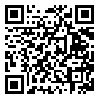Volume 1, Issue 3 (September 2022)
IJER 2022, 1(3): 37-46 |
Back to browse issues page
Download citation:
BibTeX | RIS | EndNote | Medlars | ProCite | Reference Manager | RefWorks
Send citation to:



BibTeX | RIS | EndNote | Medlars | ProCite | Reference Manager | RefWorks
Send citation to:
Mazaheri Forushani E, Baratali M. (2022). A model for designing teaching-learning space based on brain-centered approach in physical dimension for primary schools. IJER. 1(3), 37-46. doi:10.52547/ijer.1.3.37
URL: http://ijer.hormozgan.ac.ir/article-1-41-en.html
URL: http://ijer.hormozgan.ac.ir/article-1-41-en.html
1- MA in Curriculum Planning Department, Islamic Azad University, Isfahan Branch (Khorasgan), Isfahan, Iran
2- Assistant Professor, Curriculum Planning Department, Islamic Azad University, Isfahan Branch (Khorasgan), Isfahan, Iran ,baratali_540_1359@yahoo.com
2- Assistant Professor, Curriculum Planning Department, Islamic Azad University, Isfahan Branch (Khorasgan), Isfahan, Iran ,
Abstract: (1657 Views)
The present research aimed to provide a model for designing teaching-learning space based on brain-centered approach in physical dimension for primary schools using a qualitative synthesis method. The research area included all the articles and researches published in the field of teaching-learning space based on the brain-centered approach. In this regard, the design of the teaching-learning environment of primary school based on the brain-centered approach in the physical dimension and its validity were investigated and among 100 Persian articles from 2019-2021, 28 articles and from 50 English articles from 1994-2021, 25 articles selected via purposive sampling. Data collection was provided with the library method and note-taking method. To analyze the data, the roberts research synthesis steps were used. According to the findings, spatial dimension (including 12 categories), appearance characteristics dimension of the environment (4 categories) and arrengment dimension (12 categories) were identified. Also, the findings showed that the designed model has the appropriate validity.
Keywords: design of teaching-learning space, primary school, brain-based approach, physical dimension
Type of Study: Original |
Subject:
Educational Psychology
Received: 2022/04/17 | Accepted: 2022/08/19 | Published: 2022/09/1
Received: 2022/04/17 | Accepted: 2022/08/19 | Published: 2022/09/1
References
1. Afarakhth, M., Abdollahi, B., & Rostamzadeh, R. (2019). Designing a Comprehensive Model of Brain-Based Curriculum in Organizational Education. Journal of Information Technology Management, 11(3), 557-574.
2. Amani, F., Torbatinejad, N. M., & Mohammadi, M. (2019). Designing Brain-Based Online Learning withan Emphasis on Electronic and Mobile Learning. Journal of Applied Research in Higher Education, 11(1), 98-114.
3. Azeemi, M., Haghani, F., & Karami, A. (2016). Designing a learning environment based on brain-based approach in the physical dimension. Future of Education Journal, 7(1), 12-21.
4. Dadashzadeh, N., Zarei, A., & Bahrampouri, S. (2020). Brain-based learning and its implications for education: A review of literature. Journal of Educational Psychology Studies, 17, 99-122.
5. Dikici, A., & Gozusil, M. (2014). Brain-based learning and its effects on creativity. Procedia-Social and Behavioral Sciences, 114, 1119-1123.
6. Doman, G. (2010). The effect of brain-based learning on academic progress of students with different learning styles. International Journal of Humanities and Social Science, 2(5), 92-99.
7. Eskandari, F., Aghajani, H., & Gholami, H. (2019). Developing a model of learning environment design for elementaryschools based on the brain-based approach. Journal of Education and Practice, 10(4), 1-10.
8. Hasani, Z., Ahmadi, A., & Ahmadi, F. (2016). Theories of learning in educational psychology and their implications for teaching. Journal of Advances in Medical Education & Professionalism, 4(4), 170-176.
9. Jackie, C., & Shah, P. (2018). Neuroscience, learning, and practical training: challenges and applications. Journal of Education and Practice,9(4), 23-30.
10. Jacob Koola, M., & Michel Olou, B. (2018). Brain-based learning: Implications for effective classroom management. Journal of Education and Practice, 9(21), 70-76.
11. Jalali, M., Ahmadi, M., & Jalali, R. (2019). Designing a brain-based learning environment. International Journal of Instruction, 12(4), 621-634.
12. Mahjoob, A. (2019). An Introduction to Learning Neuroscience and the Role of Brain-Based Learning in Teaching and Learning. Journal of Educational Psychology Studies, 16(31), 77-103.
13. Malekian, F. (2018). Designing an optimal physical environment for learning based on the brain-based approach. International Journal of Educational Psychology and Counseling, 3(2), 25-34.
14. Novzari, Z., Rahimi, M., & Sadeghi, F. (2019). The Effect of Brain-Based Education on Learning and Language Readiness of Preschool Students. Journal of Developmental Psychology, 16(64), 21-38.
15. Pookie, M., & Estelle, L. (2007). Improving students' progress through brain-based strategies. Journal of Educational Psychology, 99(4), 862-877.
16. Reisberg, D., & Latfi, M. (2006). Brain-based learning and the role of fine arts. Journal of Educational Psychology, 98(3), 469-482.
17. Samadi, M., & Vakili, M. (2019). The effect of brain-based learning on academic achievement and self-efficacy in mathematics. Journal of Education and Practice, 10(3), 143-149.
18. Sprengher, M. (2002). The effects of music on brain changes and human health. Journal of Music Therapy, 39(4), 243-255.
19. Taheri, A. (2017). The role of the physical environment in learning: A review of the literature. Journal of Environmental Psychology, 51, 97-114.
Send email to the article author
| Rights and permissions | |
 |
This work is licensed under the Creative Commons - Attribution 4.0 International. |









